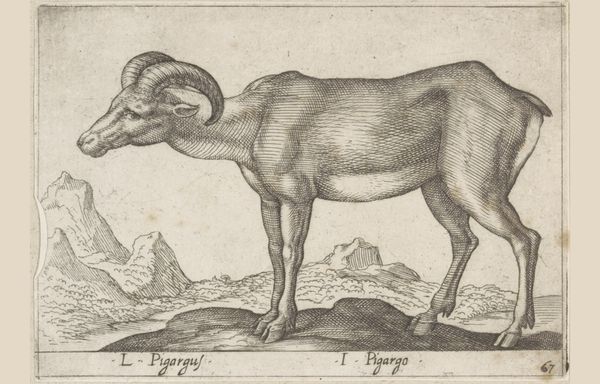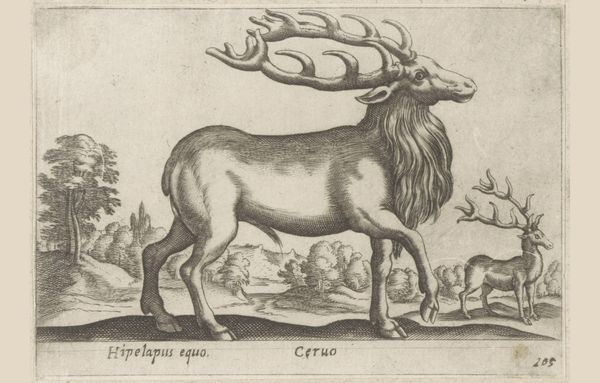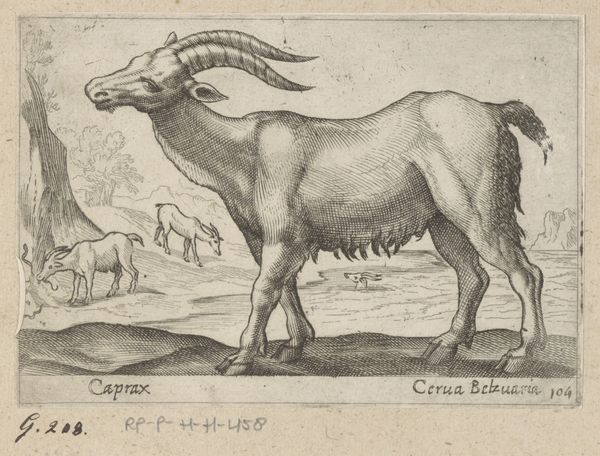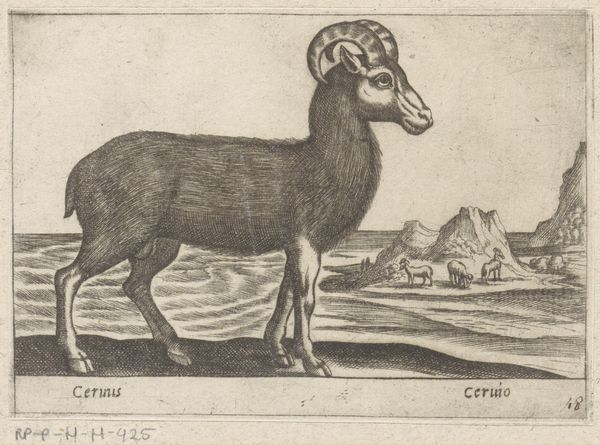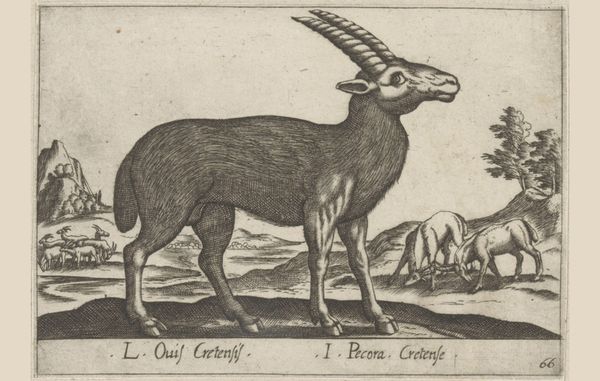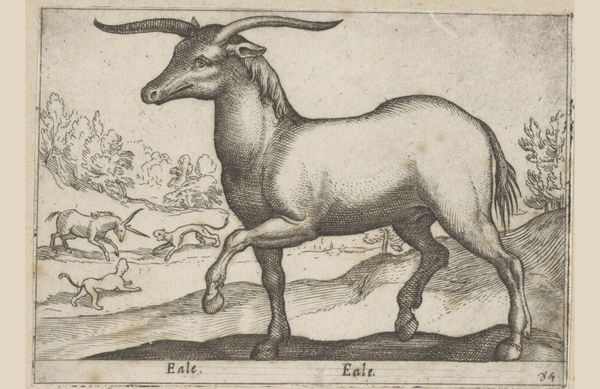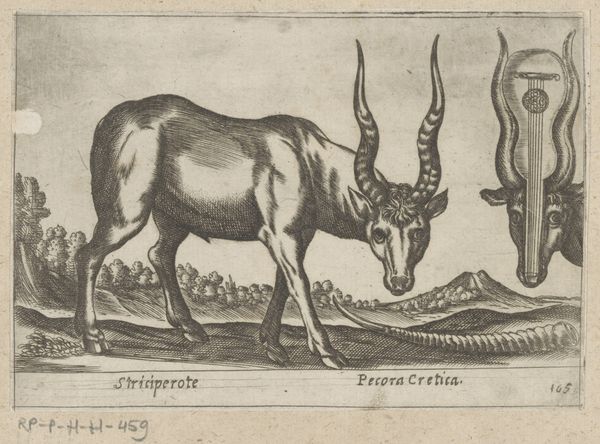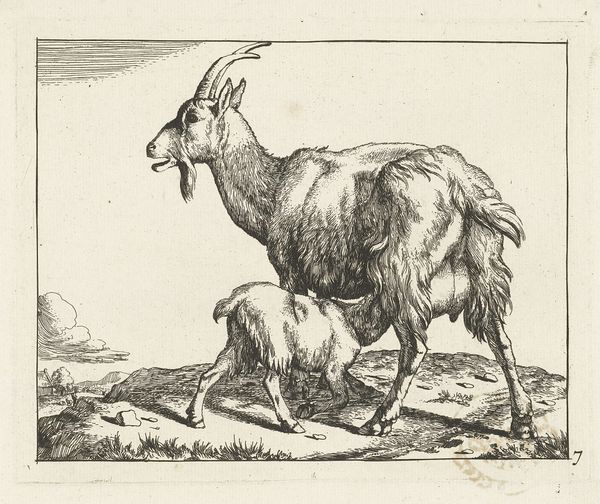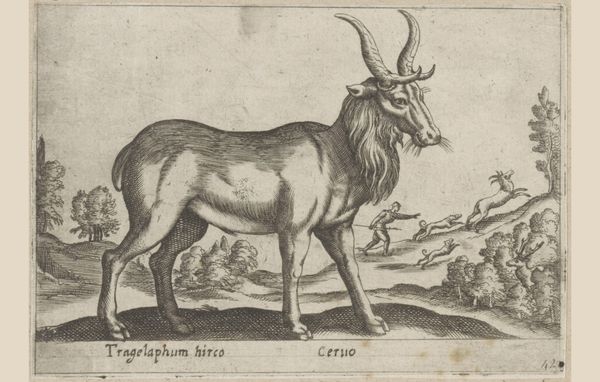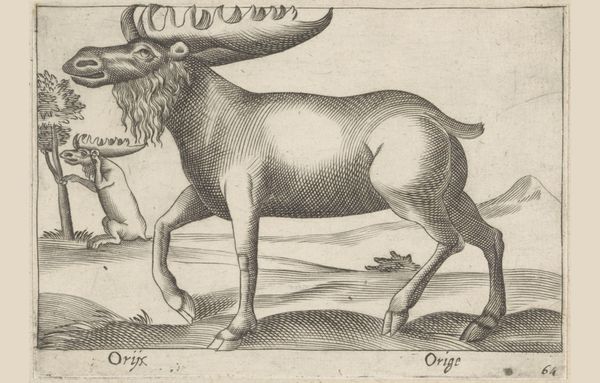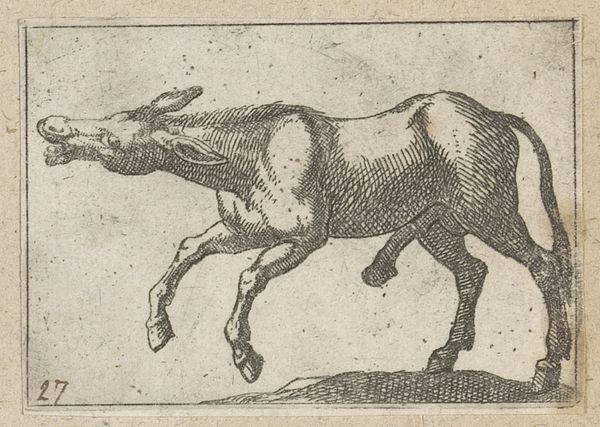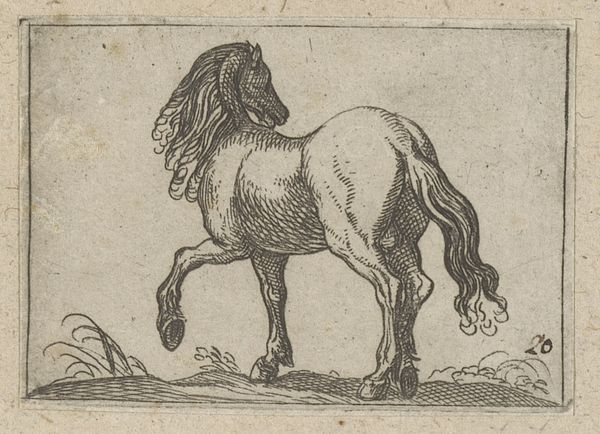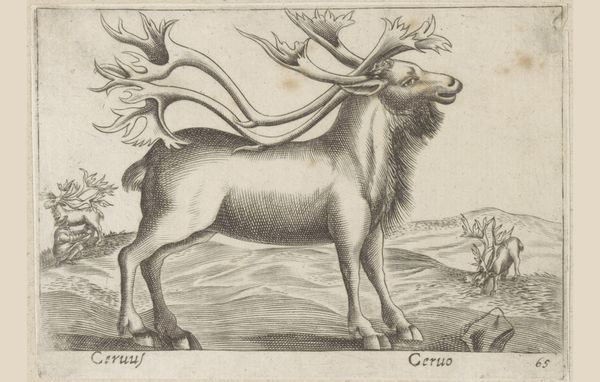
drawing, print, engraving
#
drawing
#
baroque
#
animal
# print
#
pen sketch
#
engraving
Dimensions: height 95 mm, width 137 mm
Copyright: Rijks Museum: Open Domain
Antonio Tempesta made this ‘Antilope’ using etching, a printmaking technique, sometime before 1630. Acid is used to bite lines into a metal plate, which is then inked and printed. Look closely, and you can see how the etched lines define the animal’s form, creating the texture of its fur and the contours of its muscular body. Tempesta's skill with this medium allowed him to capture the antelope in a lifelike way. He gives attention to detail by rendering the animal’s twisted horns and alert expression. Beyond its aesthetic qualities, this print offers insight into the cultural context of its time. Etchings like this were often made in multiples, allowing for the widespread dissemination of images and knowledge. This speaks to a growing culture of scientific inquiry and exploration during the Renaissance and Baroque periods. The print also reflects an interest in exotic animals, fueled by trade and exploration. By considering the materials, processes, and social context, we can appreciate the full depth and complexity of this image.
Comments
No comments
Be the first to comment and join the conversation on the ultimate creative platform.
